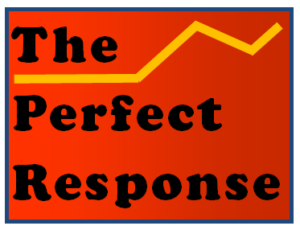Picking the wrong time to perform a demanding task is the penalty we pay for not knowing our own efficiency curve.
We are in a waking state most of the day, roughly two thirds of our life. But being awake and being alert are not the same thing. All of us have an efficiency curve: a line that tracks when we are least and most able to face the big mental challenges that the world throws at us. Many tasks don’t require knowing the moment of one’s peak performance. Answering phones in an office or helping customers in a retail setting may require more stamina than a period of intense focus and concentration. But for many others, finding the moment when the lights are really on is an important workplace survival skill.
I was reminded of this by reading Janet Malcolm’s profile of MSNBC anchor Rachel Maddow. Malcolm asked her subject why she started work in the early afternoon. (Maddow’s show airs live at 9:00 p.m. Eastern Time). Maddow sensibly answered that she had to pick her moment. She noted that you can only have your brain ‘light up’ for a limited time. She needed to perform well in what amounts to a series of extended narratives delivered in her prime time spot. It is possible to hit the high point of her curve if she starts preparing for her show after lunch. Her particular ‘high noon’ happens at 9 in the evening.
A lot of writers note the importance of the same natural curve, with many finding that mornings are when they are their most productive. In my own scheme for getting a book done, mornings are for writing; afternoons are reserved for rewriting or polishing. The curve flips for others who work best late at night.
It is true that a jolt of adrenaline might be enough to overcome encroaching mental dormancy. A pianist about to perform a set of demanding solo pieces for a paying audience will probably find hormonal reserves to carry them past the torpor caused by a sleepless night. But that’s no way to live.
Students are often slow to learn their own curve, sometimes making the mistake of saving the toughest mental work of the day for the periods when their minds are fallow. High school schedules don’t help. They often require punishing early morning starts of classes forced upon nearly comatose teens. Many are simply not ready to handle an A.P. Physics at 7:30 a.m.
![]()
Is it good to be the first surgery patient on a Monday morning? What if the doctor was at the Tiki Bar in Costa Rica just 15 hours earlier?
We all know the feeling of staring at a blank page or screen waiting for inspiration that may never arrive. Picking the wrong time to do a demanding task is the penalty we pay for not knowing our own efficiency curve.
Sometimes it bears not thinking about potentially consequential mismatches of work tasks against a person’s natural curve. Is it good to be the first surgery patient on a Monday morning? What if the doctor was at the Tiki Bar in Costa Rica just 15 hours earlier? And how about pilots flying a ‘red eye’ coast to coast? One can hope that at least somebody in the cockpit is a late riser.
I had a friend who worked on a car assembly line one summer. In the days before robots and computers he swears that they managed to partly assemble a three-door sedan early into the first morning shift. Workers on the line realized too late that the company was making a two-door car on one side and a four-door car on the other side. Clearly someone was off their game.
![]()

